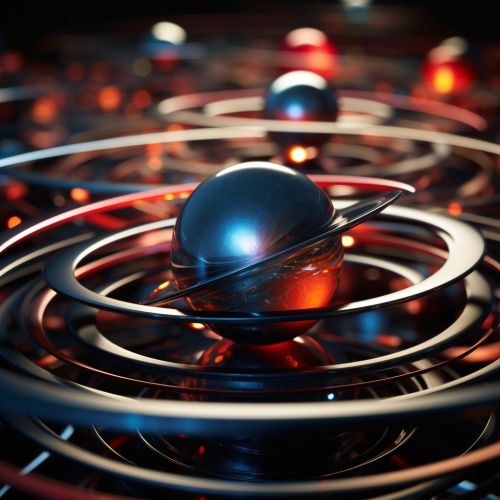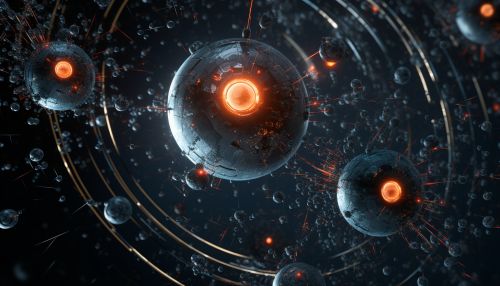Antiquark
Introduction
An antiquark is the antiparticle counterpart to a quark. Quarks are elementary particles that combine to form hadrons, such as protons and neutrons, which are components of atomic nuclei. Antiquarks, therefore, are integral to the formation of antimatter counterparts to these particles.


Properties
Antiquarks possess the same mass, mean lifetime, and spin as their corresponding quarks, but their electric charge, color charge, baryon number, and other quantum numbers are opposite. This characteristic is a fundamental aspect of particle physics and the study of quantum mechanics.
Formation
Antiquarks are produced in high-energy collisions that involve quantum chromodynamics (QCD), the theory describing the strong interaction. They can also be found in particle-antiparticle pairs produced by pair production, a process that occurs when a photon of sufficient energy interacts with a physical system.
Role in Antimatter
In the realm of antimatter, antiquarks play a crucial role. When antiquarks combine with each other or with quarks, they form composite particles. For instance, an up antiquark and a down antiquark can combine to form an antiproton. This process is governed by the principles of quantum field theory and the conservation laws of particle physics.
Antiquark-Quark Interaction
Antiquarks can interact with quarks through the process of annihilation. When a quark and an antiquark meet, they can annihilate each other, producing a burst of energy. This interaction is fundamental to many processes in the universe and is a key area of study in high-energy physics.
